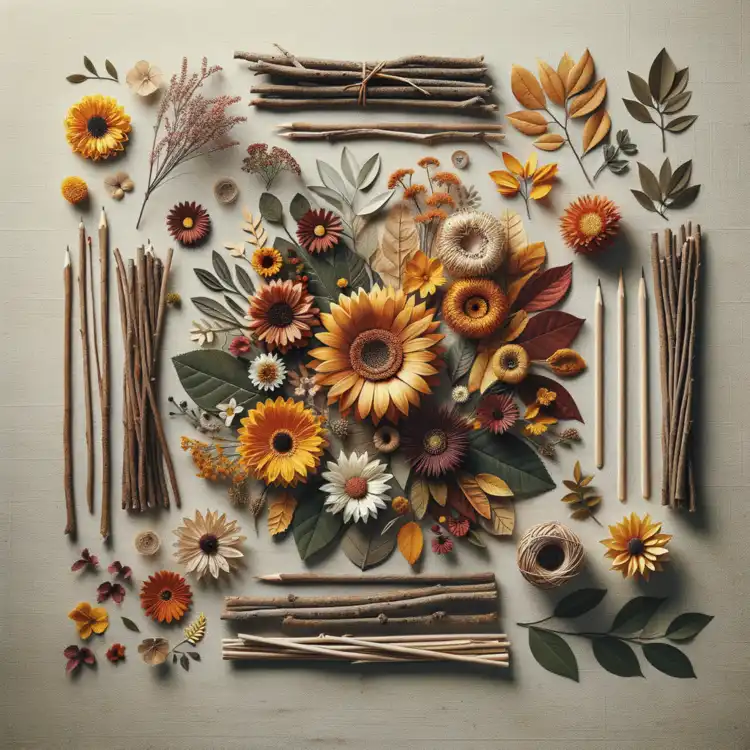Creativity Boost
Nature weaving enhances children's creativity and self-expression.
TIP: Keep a variety of art supplies on hand to inspire different types of creativity.
2025-04-14
Engaging in nature weaving activities contributes significantly to toddlers' development through various channels.
Nature weaving enhances children's creativity and self-expression.
TIP: Keep a variety of art supplies on hand to inspire different types of creativity.
It improves fine motor skills through hands-on manipulation of natural materials.
Encourages teamwork and social interaction among children.
Have you ever thought about how much fun it can be to create beautiful art using materials from nature? At Tots Tutor, we believe that nature weaving is a fantastic way for toddlers to explore their creativity while enjoying the great outdoors. Using simple items like flowers, leaves, and sticks, little ones can express their artistic ideas and learn valuable skills at the same time!
Nature weaving is an engaging craft that involves intertwining natural materials to create stunning designs. Children can use these materials to make wall hangings, decorations, or even gifts for loved ones. The process encourages them to use their imagination and develop their fine motor skills as they learn to manipulate the items they gather. This is a great way to improve fine motor skills, which are crucial for development.
At Tots Tutor, we love the idea of children connecting with nature while they make art! It not only allows them to learn about their environment, but it also gives them a sense of accomplishment when they see their creations come to life.
Engaging in nature weaving activities has numerous benefits for toddlers. First and foremost, it's a wonderful way to foster creativity. When they create their own designs, kids feel proud and empowered. Additionally, working with natural materials helps improve their observation skills as they notice different shapes, colors, and textures.
Moreover, nature weaving encourages teamwork when children work together, sharing ideas and materials. This social aspect is essential for their development. In our Tots Tutor activities, we always incorporate ways for kids to collaborate and learn from each other. Just imagine the joy on their faces when they see what they can create together!
To take your nature weaving projects to the next level, consider incorporating thematic elements! For instance, choose a specific color palette based on the season or create designs that represent particular animals or stories. This not only enhances creativity but also helps children make deeper connections with their surroundings.
When engaging in nature weaving, it's essential to ensure a safe environment for everyone involved, especially when kids are participating. Understanding the potential hazards is the first step in protecting our little learners. Here are some safety tips that can help you navigate nature weaving safely.
First, it’s crucial to identify harmful plants and materials that might be present in your surroundings. Some plants, like poison ivy or certain mushrooms, can cause skin irritation or allergic reactions. Educating yourself and your children about these plants will help them enjoy nature without any unpleasant surprises!
When crafting with toddlers, safety is paramount! At Tots Tutor, I believe that kids can learn and create joyfully while also being safe. Here are some best practices to ensure a fun and secure crafting experience for everyone.
One effective way to keep your crafting safe is by using tools that are designed for little hands. For instance, using child-safe scissors can help prevent injuries. Additionally, supervising the activity closely will ensure that children use materials properly and stay engaged in the learning process. For more fun and safe activities, check out our guide on easy toddler activities.
Once you've introduced nature weaving to your little ones, it's important to encourage their ongoing exploration! This not only fosters their creativity but also creates a sense of community around the craft. Sharing projects and connecting with others can inspire even greater enthusiasm!
One great way to promote this is by having children share their finished projects with friends and family. This not only helps them feel proud of their work, but it also opens the door for discussions about what they learned during the process. At Tots Tutor, I find that these connections can spark further interest in nature and crafting! Consider the engaging ideas shared in our post on crafting fun ideas for kids to further inspire your little ones.

To keep the creativity flowing, it's essential to provide children with resources that inspire their nature weaving journey. There are countless books, websites, and community resources available that can help deepen their understanding and skills. At Tots Tutor, I love sharing these resources with parents and educators!
Participating in workshops or community art projects is also a fantastic way to engage children in nature weaving. These events can offer a new perspective and provide hands-on learning opportunities that enrich their experience. For another creative seasonal activity, check out our ideas for spring flower coloring pages.
As we reflect on the creative process of nature weaving, it's clear that this activity offers numerous benefits for toddlers. Not only does it enhance their fine motor skills, but it also nurtures their creativity and connection with the outdoors. I am always amazed at the joy that comes from simple activities like this!
I invite you to share your own nature weaving experiences with us! Hearing about the unique projects and insights from other families can create a sense of community and inspiration. Together, we can celebrate the beauty of nature through our crafts. For more inspiration on creative activities, explore our article on crafts and activities that inspire creativity.
By immersing ourselves in nature weaving, we not only create beautiful art but also foster a love for the natural world around us. Let’s inspire our little ones to appreciate the beauty of flowers, leaves, and sticks while engaging in mindful and creative play!
Here is a quick recap of the important points discussed in the article:
Nature weaving boosts creativity, enhances fine motor skills, improves hand-eye coordination, promotes teamwork and social interaction, and fosters a connection with nature.
Identify and avoid harmful plants, use child-safe tools, and supervise children closely during the activity.
Share their creations, encourage storytelling about their experiences, and consider joining a nature weaving group or club.
Explore local workshops, online tutorials, and community art projects for inspiration and guidance.
